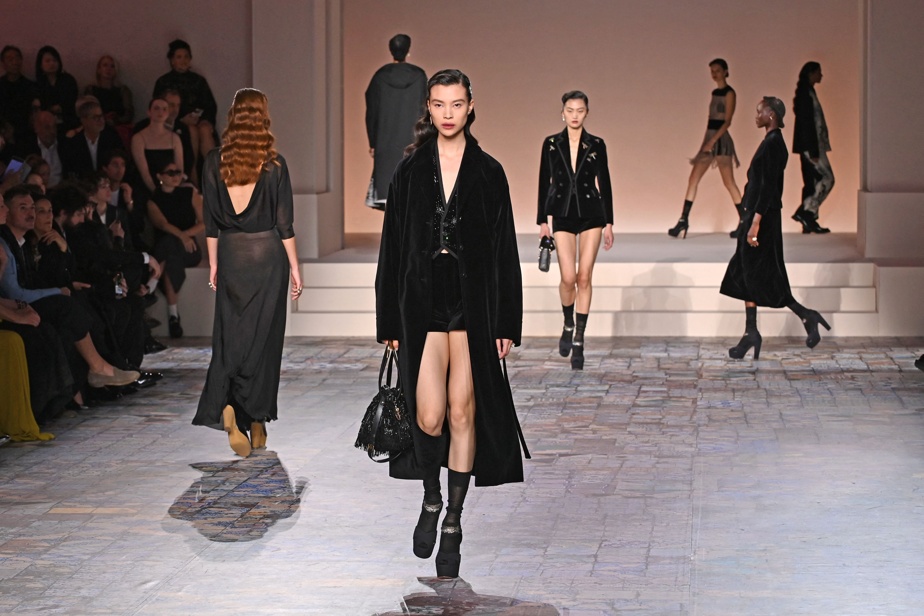(New York) Dior chose the world of actress Marlene Dietrich to create a link between Paris and New York, where the house presented its fall collection on Monday, which recalls the Hollywood of the 30s and 40s , period of sartorial emancipation.
The artistic director of the women’s lines, Maria Grazia Chiuri, was inspired by the actress of German origin (1901-1992) to combine “the Dior silhouette with the phantasmagorical presence of the diva and her boyish allure”, according to the notes collectible.
As in a pre-war film, black and white dominates, while the woman reinterprets the totems of the male wardrobe: loose pants, tie, bomber jacket or cap worn askew.
Tweed reigns supreme, again reminiscent of men’s fashion, but in a much lighter version, for this collection, the bulk of which was presented in December in Paris and the pieces of which will be available from Thursday.

PHOTO CAITLIN OCHS, REUTERS
“Marlene Dietrich’s men’s costumes caused scandal, claiming a freedom which, let us not forget, involves the choice of every woman to dress as she wishes,” insist the collection notes.
Besides the singer of the song Lily Marleenwho lived the last years of his life in Paris, Dior also summons Katharine Hepburn and Greta Garbo, also stars of the 1930s and fans of sartorial fluidity.
Drawing from the masculine world, these pioneers have not abandoned the glamor of long, low-cut red carpet-style dresses, in opulent velvet or undulating rhinestones.
Maria Grazia Chiuri disseminated contemporary pinches, mini-shorts under a strict suit, wedge soles or openwork blouses at the back on models who paraded under the eyes of actresses Charlize Theron, Anya Taylor-Joy or Rachel Zegler.

PHOTO CAITLIN OCHS, REUTERS
Maria Grazia Chiuri
The event was held at the Brooklyn Museum, designed by the Claire Fontaine duo, which brings together conceptual artists Fulvia Carnevale and James Thornhill.
Claire Fontaine represented a series of two giant hands which join thumbs and index fingers, those “of all the women who were involved in this project”, explained to AFP Fulvia Carnevale, “mine, those of Maria Grazia Chiuria, those of seamstresses, curators.”
The meeting between Paris and New York also took place on a series of prints, always black and white, which depict the Eiffel Tower and the Statue of Liberty.
It’s “a conversation around freedom,” say the collection notes, “to give shape and substance to what each woman decides to be.”
